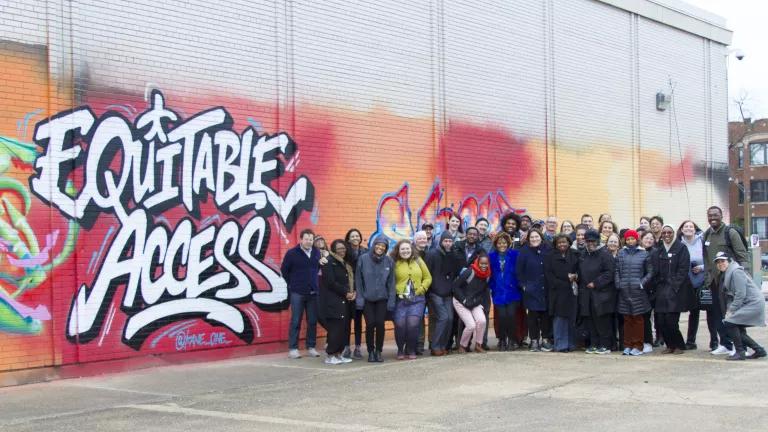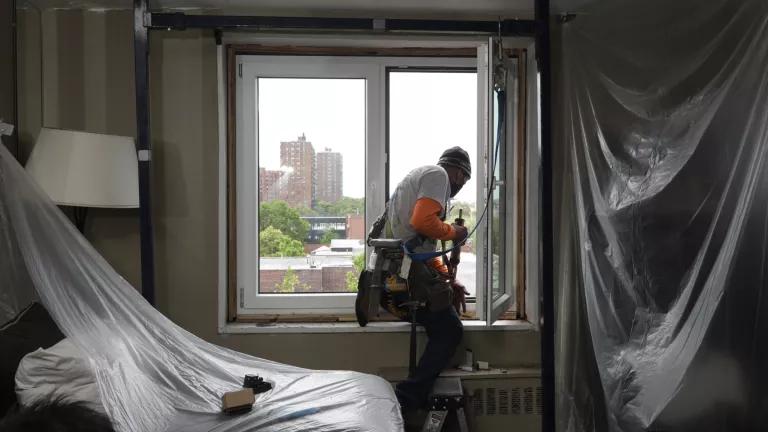This past week, the full House of Representatives began consideration of the Interior, Environment, and Related Agencies Appropriations Act, FY 2012 (H.R. 2584). As many of my colleagues have already blogged, H.R. 2584 includes many anti-environmental riders and amendments that would block protections for clean air, clean water, wilderness lands, and wildlife.
These riders and amendments, however, will also significantly harm environmental justice communities around the country, who already bear a disproportionate burden of our nation’s toxic pollution.
For example, an amendment by Rep. Cynthia Lummis (R-WY) that was tacked onto H.R. 2584 in subcommittee will block life-saving EPA standards to cut mercury and toxic air pollution from dirty power plants. EPA has estimated that blocking its proposed Mercury and Air Toxics standards for power plants by even two additional years would mean:
- up to 34,000 premature deaths;
- 22,000 heart attacks;
- 240,000 more asthma attacks; and
- 24,400 more hospital and emergency room visits.
But it only gets worse for environmental justice communities.
H.R. 2584 also includes some significant budget cuts for several important EPA programs, including its Smart Growth Program and its Community Action for a Renewed Environment (CARE) grant program. In fact, H.R. 2584 not only proposes to cut funding for these programs, but to zero-out funding completely.
EPA CARE is an innovative competitive grant program focused on helping local organizations – including non-profits, businesses, schools, tribes, and local/state governments – create partnerships that implement solutions to reduce releases of toxic pollutants and minimize people’s exposure to them.
Since 2005, the CARE program has provided transformative grants to almost 100 communities across the country ranging from $75,000 - $300,000 each to develop and implement innovative ways to address the risks from multiple sources of toxic pollution in their environment. In FY10 alone, the CARE program provided about $2 million to 16 communities around the country.
The CARE program’s stated priorities are to:
- Reduce exposures to toxic pollutants through collaborative actions at the local level.
- Help communities gain an understanding of all potential sources of exposure to toxic pollutants.
- Work with communities to set priorities for risk reduction activities create self-sustaining, community based partnerships that will continue to improve the local environment.
In 2009 the National Academy for Public Administration (NAPA) issued a report where they reviewed EPA’s CARE program and found:
The [program] supports a community-driven process that uses the best available data to help communities set priorities and take action on their greatest environmental risks. CARE fosters local partnerships that seek participation from business, government, organizations, residents, and EPA staff. And, CARE supports a public, transparent planning and implementation process based on collaborative decision-making and shared action. The Study Panel overseeing this effort was impressed by the dedication of EPA staff to the goals of this unique initiative and commends EPA for its efforts to partner with communities in achieving important, long-term and sustainable environmental improvements at the local level.
NAPA’s glowing endorsement of the CARE program grew from its recognition that the best way that the federal government can help local communities is by providing them the funding necessary to develop unique partnerships, collaborations, and expertise so they can address the very real toxic pollution and environmental challenges they are facing. In particular, NAPA observed that the program demonstrated how communities could effectively address environmental problems at the local level without federal agencies getting in the way.
The irony is that cutting the EPA CARE program appears to run in direct contradiction to the ideological agenda that is driving this unprecedented assault on our environmental and public health protections. Tea Party folks believe that eliminating federal authorities and cutting funding for federal programs gets the government out of the business of state and local communities. What they fail to see is that the EPA CARE program does just that – it takes federal funds and put them in the hands of local communities to figure out the best ways to address their environmental problems.



